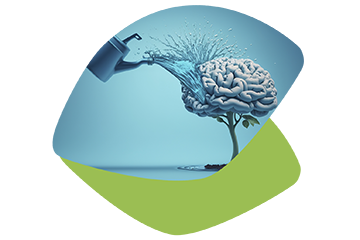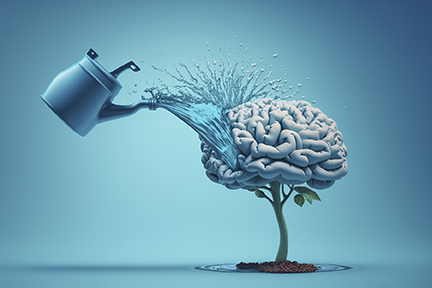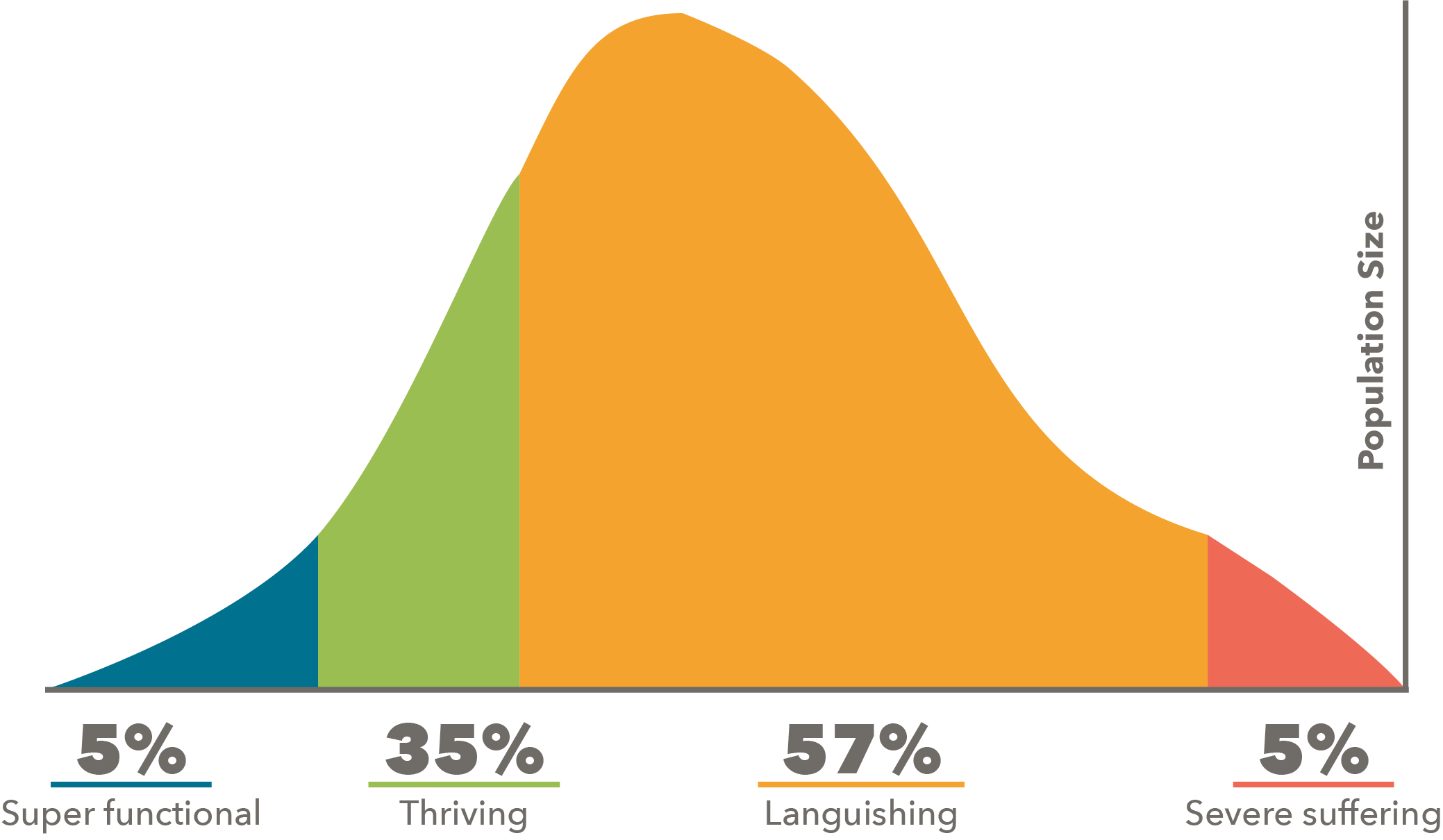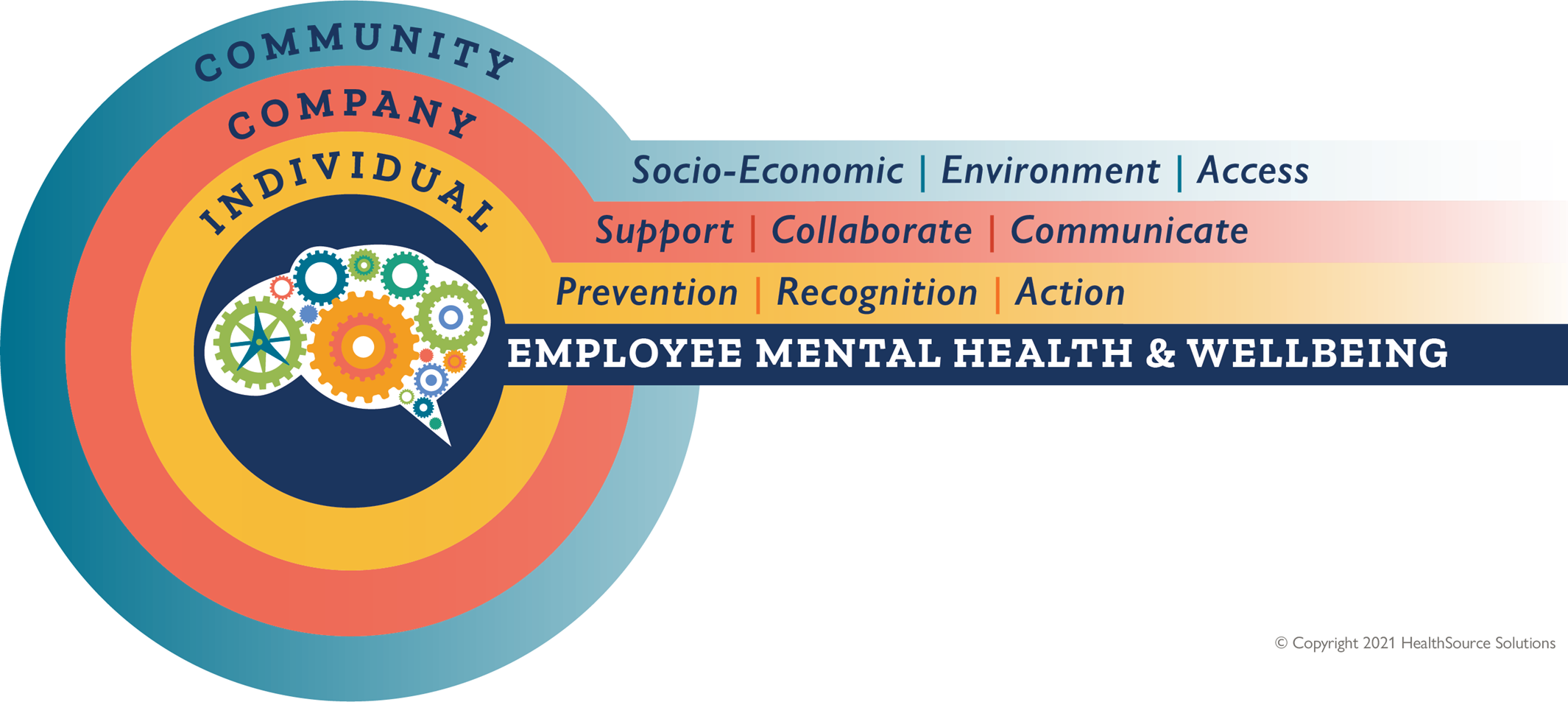Mental Health vs Mental Wellbeing: What’s the difference?


Since the Pandemic, employers have been struggling to meet the mental health needs of their workers in a way that is both effective and meaningful. The struggle has resulted in a gap in perception between management and workers. While 80% of executives say their company supports mental well-being in the workplace, only 46% of employees agree, citing that their company is not doing enough to support it. Part of the challenge may be confusion between what mental health and mental wellbeing are, with both sides trying to understand the difference.
Mental Health
When mental health is referenced, it often aligns with a clinical diagnosis or treatment. Nearly 20-30% of all workers experience mental health challenges in their lives, whether on a chronic basis or because of a crisis. Although mental health has structured diagnosis and treatment, there is still an unfortunately high percentage of workers who don’t seek support.
Careers like education and construction see an unusually high amount of stress and stress-related trauma. For example, construction workers have a 400% greater risk of suicide than comparable fields. Getting treatment early and consistently is one of the most effective solutions for supporting those in need.
MENTAL HEALTH involves a clinical diagnosis that is supported through a variety of treatments such as:
- Cognitive Behavioral Therapy (CBT)
- Humanistic Therapy
- Integrative/Holistic Therapy
- Pharmaceutical Therapy (Medication)
As with many medical conditions, finding the right combination of therapy may take time.
Mental Wellbeing
However, mental wellbeing encompasses all elements of prevention, intervention, and support. Mental wellbeing impacts 100% of the workforce and is an effective means for building awareness and mental resilience. While most workers are not experiencing a mental health issue, every worker is at risk of sliding from 'thriving' to 'languishing.' Being proactive and building a culture of resilience is the driver to making lasting change.
MENTAL WELLBEING tends to focus on lifestyle with an emphasis in the areas of prevention, intervention, and education.
- Offering Mental Health first aid training
- Tools and resources that support 'immediate coping skills' to help build resistance such as meditation, mindfulness, music, etc.
- Embracing a growth mindset
- Ensuring employees feel valued and included
- An organizational culture that acknowledges and embraces all aspects of mental wellbeing
Both Mental Health and Mental Wellbeing are Equally Important

This chart shares the 'common' stages of mental wellbeing. Each individual shifts between stages based on current life circumstances. Ideally, most of the time should be spent on thriving and bouncing into being super functional periodically. Unfortunately, since the pandemic, individuals report spending most of their time 'languishing.'
Left unmanaged, an entire workforce’s mental well-being tends to shift towards 'languishing' or even into 'suffering,' which may significantly impact productivity and presenteeism. As the worker slips down, mental health treatment becomes necessary, causing increased strain on the worker, their family, and their productivity. Mental well-being initiatives are designed to immunize the worker and the company against this sliding trend, making mental and emotional decline less likely.
To maintain a culture of wellness, organizations must build a strategy encompassing the full spectrum of mental health and wellbeing, helping move workers away from 'suffering' towards 'thriving.' By creating a culture of resiliency and inclusion that includes leadership’s commitment, belonging considerations, and a sense of personal fulfillment, an organization can be the positive force that moves its community to one of thriving.
HealthSource Solutions has developed an organizational model that supports companies in taking a multi-faceted approach to dive deeper into the issue of mental health and wellbeing. We aim to help broaden an organization’s approach and implement interventions beyond end-point solutions (those targeted to just the individual). Once the critical piece of individual support and access to care is implemented, it’s time for the organization to start the deeper work of building a culture of resiliency.
Goals of Effective Mental Wellbeing Strategy:
- Create a supportive, inclusive, stigma-free culture around mental health and wellbeing.
- Develop a charter which includes ongoing training, education, recognition, and action to support mental health and wellbeing.
- Build infrastructure to support program sustainability through leadership engagement, policies, tools, and resources.

By destigmatizing the topic, encouraging intervention, and creating a culture of inclusion and acceptance workplaces can be a positive force in the mental resilience of their organization and its workers.
let us help
Need guidance in developing and executing a comprehensive Mental Wellbeing Strategy?



